
Lecture 3—4—5 (part 2)
ASSISTANT. PROF. DR . BUSHRA
JABBAR
UNIVERSITY OF BABYLON
COLLEGE OF MEDICINE
DEPARTMENT OF HUMAN ANATOMY
MEDICAL BIOLOGY
OBJECTIVES
-
Gene expression
-
GENE CONTROLE REGION
-
TRANSCRPTION PROCESS
-
TRANSLATION PROCESS
-
Gene regulation
-
Mechanisms of gene regulation include
-
MUTATION
-
TYPES OF MUTATION

Gene expression :
The process of gene expression is used by all known life—
eukaryotes (including multicellular organisms), prokaryotes
(bacteria and archaea), and utilized by—to generate the
macromolecular machinery for life.
Several steps in the gene expression process may be modulated,
including the transcription, RNA splicing, translation, and post-
translational modification of a protein.
The process of gene expression involves two main stages:
Transcription:
the production of messenger RNA (mRNA) by the
enzyme RNA polymerase, and the processing of the resulting
mRNA molecule.
Translation
: the use of mRNA to direct protein synthesis, and the
subsequent post-translational processing of the protein molecule.
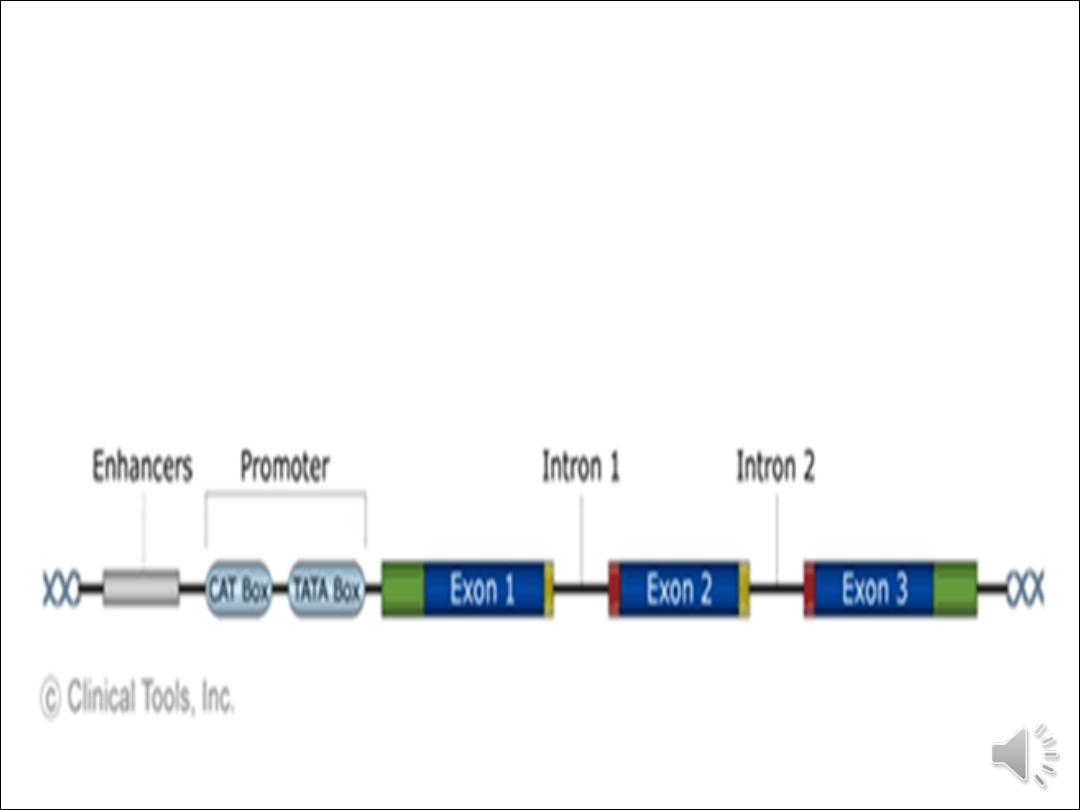
Exons. Exons code for amino acids and collectively determine
the amino acid sequence of the protein product. It is these
portions of the gene that are represented in final mature mRNA
molecule.
Introns. Introns are portions of the gene that do not code for
amino acids, and are removed (spliced) from the mRNA
molecule before translation.

GENE CONTROLE REGION
Start site
. A start site for transcription.
A promoter
. A region a few hundred nucleotides 'upstream' of the
gene (toward the 5' end). It is not transcribed into mRNA, but plays
a role in controlling the transcription of the gene. Transcription
factors bind to specific nucleotide sequences in the promoter
region and assist in the binding of RNA polymerases.
Enhancers
. Some transcription factors (called activators) bind to
regions called 'enhancers' that increase the rate of transcription.
These sites may be thousands of nucleotides from the coding
sequences or within an intron
Silencers
. Some transcription factors (called repressors) bind to
regions called 'silencers' that depress the rate of transcription.
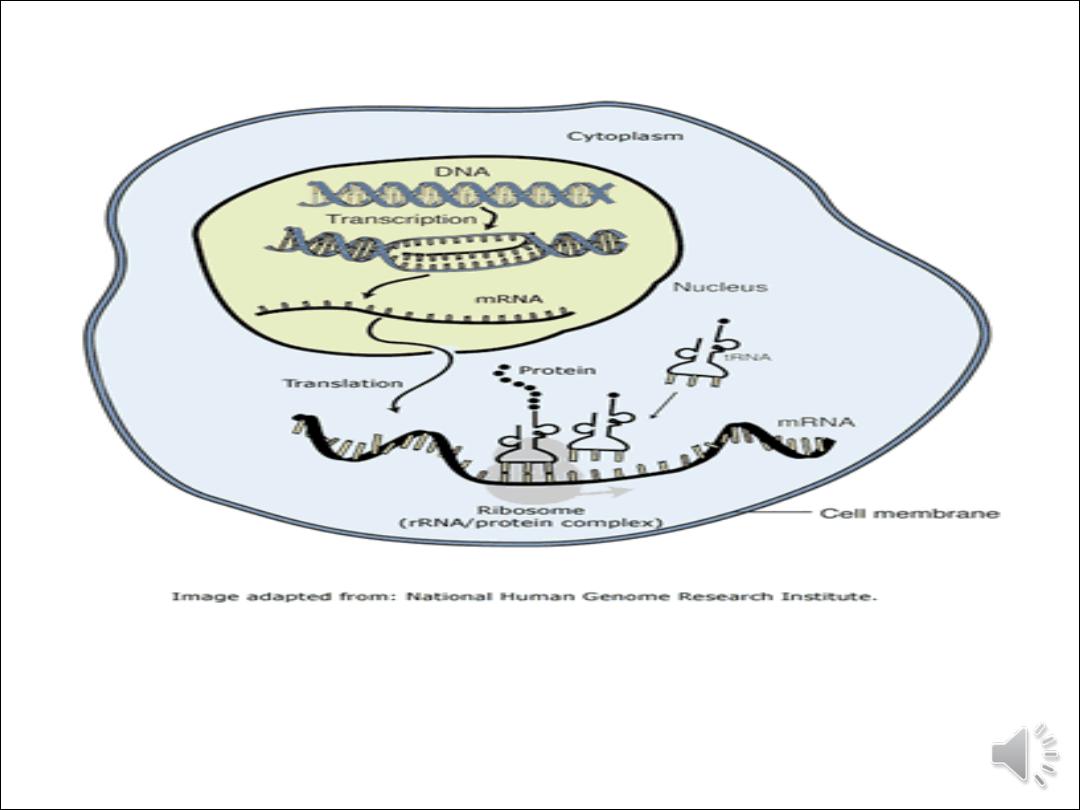

Transcription
•
Transcription is the process of RNA synthesis,
controlled by the interaction of promoters and
enhancers. Several different types of RNA are
produced, including messenger RNA (mRNA), which
specifies the sequence of amino acids in the protein
product, plus transfer RNA (tRNA) and ribosomal RNA
(rRNA), which play a role in the translation process.
•
Transcription involves four steps:
•
1- Initiation
. The DNA molecule unwinds and separates
to form a small open complex. RNA polymerase binds
to the promoter of the template strand.

2- Elongation
. RNA polymerase moves along the template strand,
synthesising an mRNA molecule. In prokaryotes RNA
polymerase is a holoenzyme consisting of a number of subunits,
including a sigma factor (transcription factor) that recognises
the promoter. In eukaryotes there are three RNA polymerases:
I, II and III. The process includes a proofreading mechanism.
3- Termination
. In prokaryotes there are two ways in which
transcription is terminated. In Rho-dependent termination, a
protein factor called "Rho" is responsible for disrupting the
complex involving the template strand, RNA polymerase and
RNA molecule. In Rho-independent termination, a loop forms
at the end of the RNA molecule, causing it to detach itself.
Termination in eukaryotes is more complicated, involving the
addition of additional adenine nucleotides at the 3' of the RNA
transcript (a process referred to as polyadenylation).

4- Processing
. After transcription the RNA molecule
is processed in a number of ways: introns are
removed and the exons are spliced together to
form a mature mRNA molecule consisting of a
single protein-coding sequence. RNA synthesis
involves the normal base pairing rules, but the base
thymine is replaced with the base uracil.
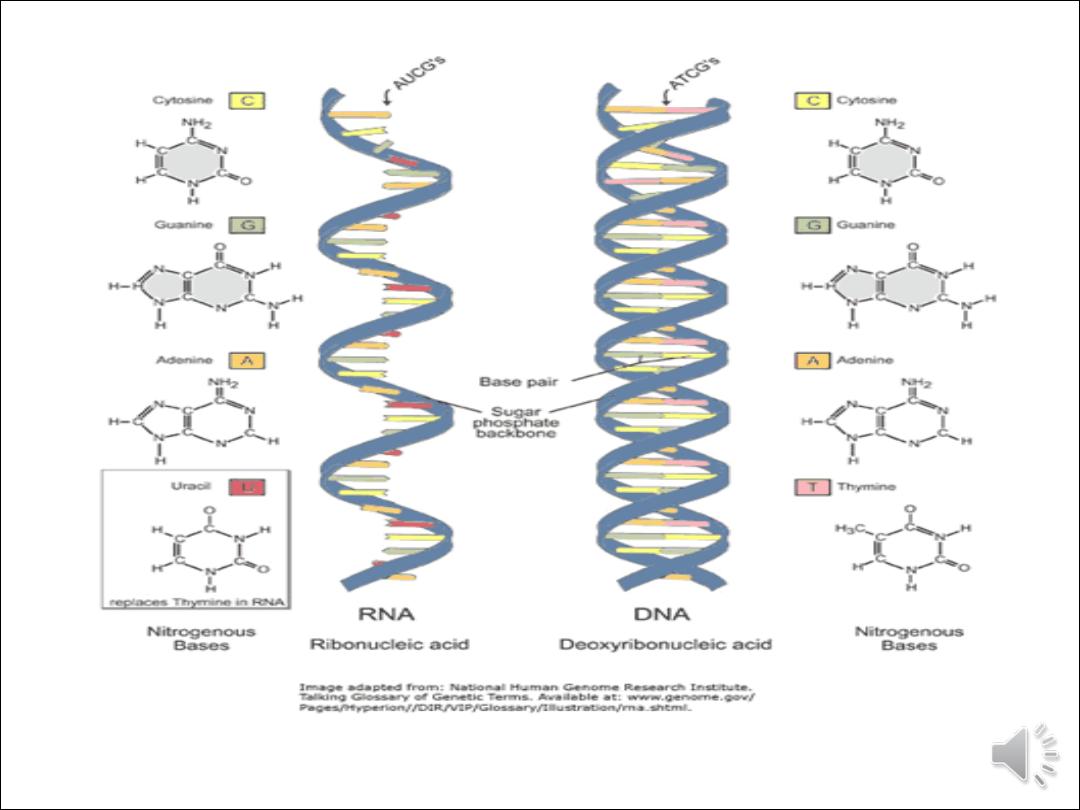

Translation
•
In translation the mature mRNA molecule is used
as a template to assemble a series of amino acids
to produce a polypeptide with a specific amino
acid sequence. The complex in the cytoplasm at
which this occurs is called a ribosome. Ribosomes
are a mixture of ribosomal proteins and
ribosomal RNA (rRNA), and consist of a large
subunit and a small subunit.

Translation involves four steps:
1- Initiation
. The small subunit of the ribosome binds at
the 5' end of the mRNA molecule and moves in a 3'
direction until it meets a start codon (AUG). It then
forms a complex with the large unit of the ribosome
complex and an initiation tRNA molecule.
2- Elongation
. Subsequent codons on the mRNA
molecule determine which tRNA molecule linked to
an amino acid binds to the mRNA. An enzyme
peptidyl transferase links the amino acids together
using peptide bonds. The process continues,
producing a chain of amino acids as the ribosome
moves along the mRNA molecule.

3- Termination
. Translation in terminated when the
ribosomal complex reached one or more stop
codons (UAA, UAG, UGA). The ribosomal complex in
eukaryotes is larger and more complicated than in
prokaryotes. In addition, the processes of
transcription and translation are divided in
eukaryotes between the nucleus (transcription) and
the cytoplasm (translation), which provides more
opportunities for the regulation of gene expression.
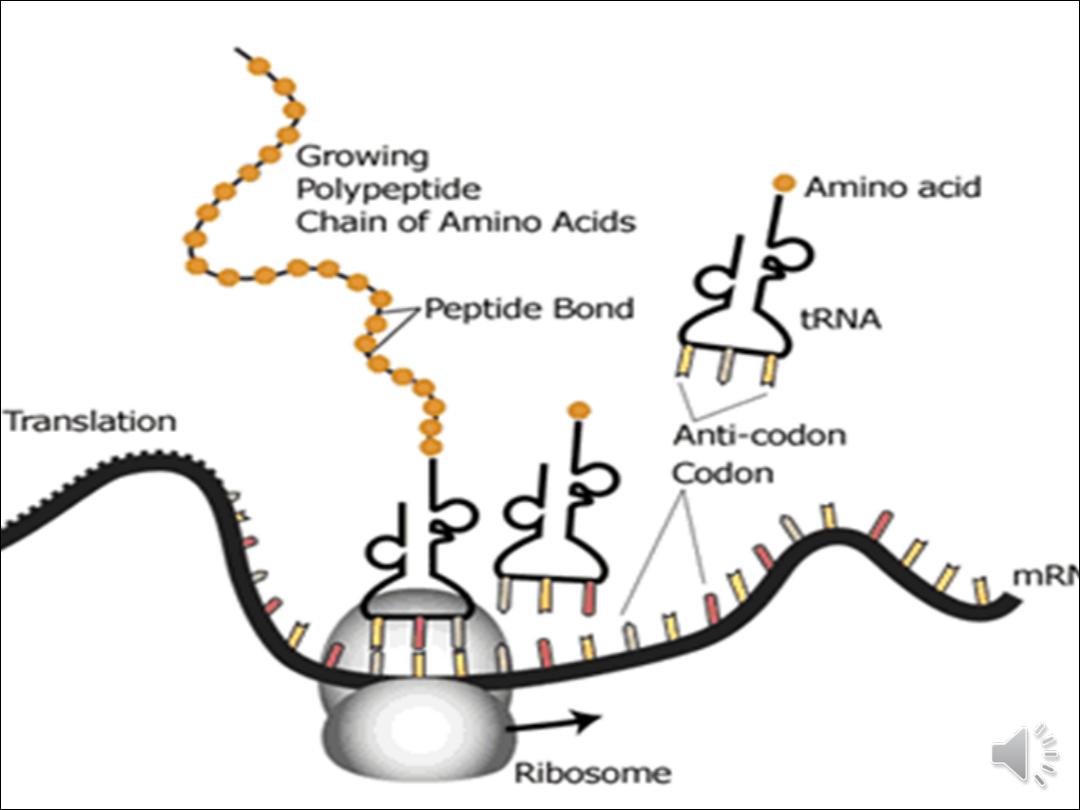

Mechanisms of gene regulation include:
1- Regulating the rate of transcription. This is the most
economical method of regulation.
2- Regulating the processing of RNA molecules,
including alternative splicing to produce more than
one protein product from a single gene.
3- Regulating the stability of mRNA molecules.
4- Regulating the rate of translation.

Mutation
mutation is a permanent change in the sequence of DNA.
causes mutations
Mutations can be caused by external (exogenous) or
endogenous (native) factors, or they may be caused by errors in
the cellular machinery. Physical or chemical agents that induce
mutations in DNA are called mutagens and are said to be
mutagenic.
Exogenous factors
: environmental factors such as sunlight,
radiation, and smoking can cause mutations.
Endogenous factors
: errors during DNA replication can lead to
genetic changes as can toxic by-products of cellular metabolism.
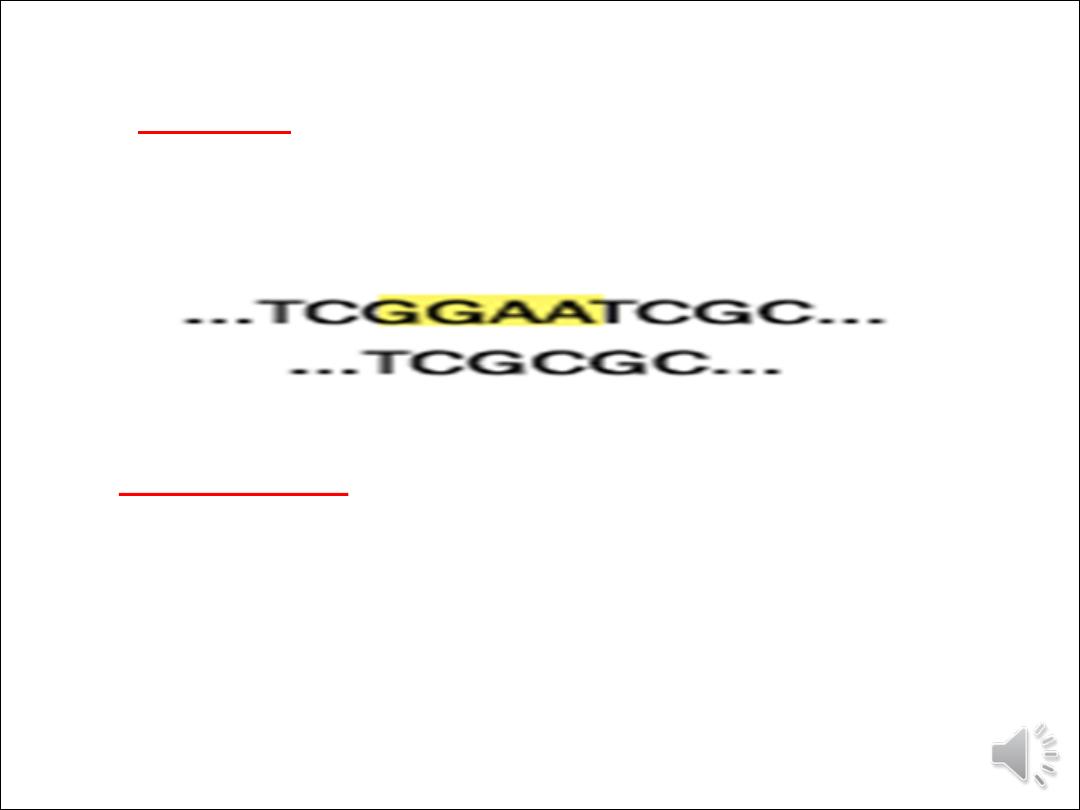
•
1-Deletion
•
Genetic material is removed or deleted. A few bases can be
deleted or it can be complete or partial loss of a chromosome.
2-Translocation
A structural abnormality of
chromosomes where genetic material
is exchanged between two or more
non-homologous chromosomes.

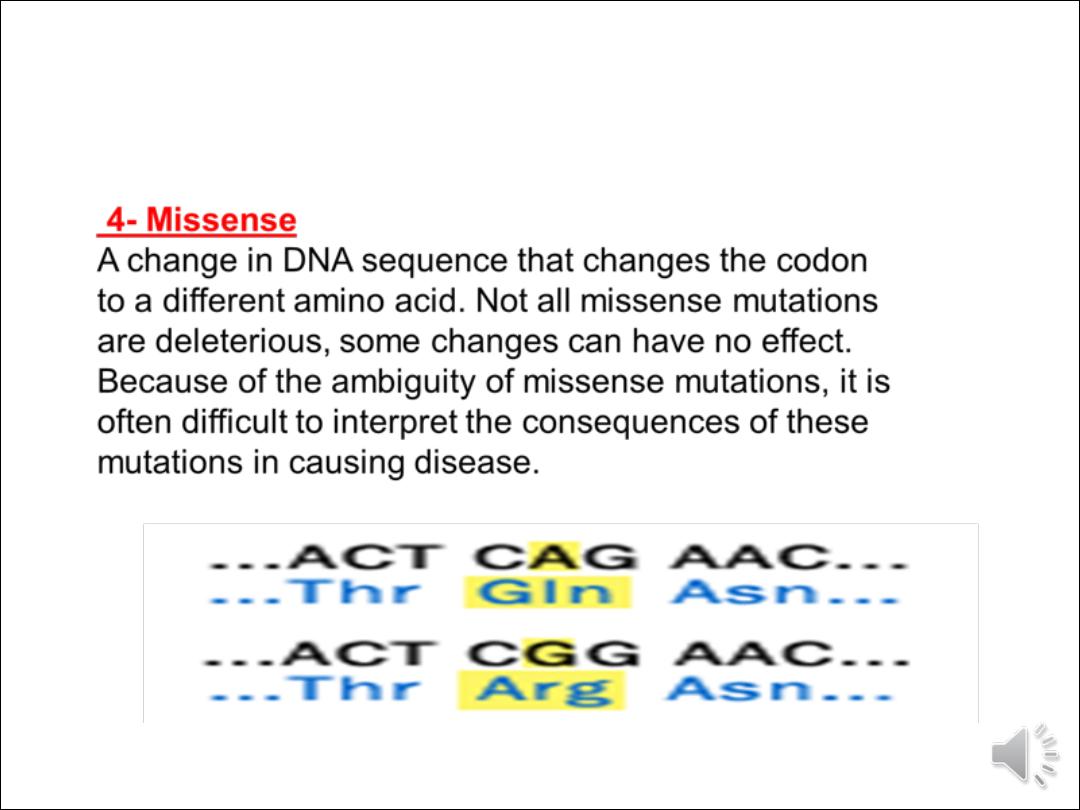
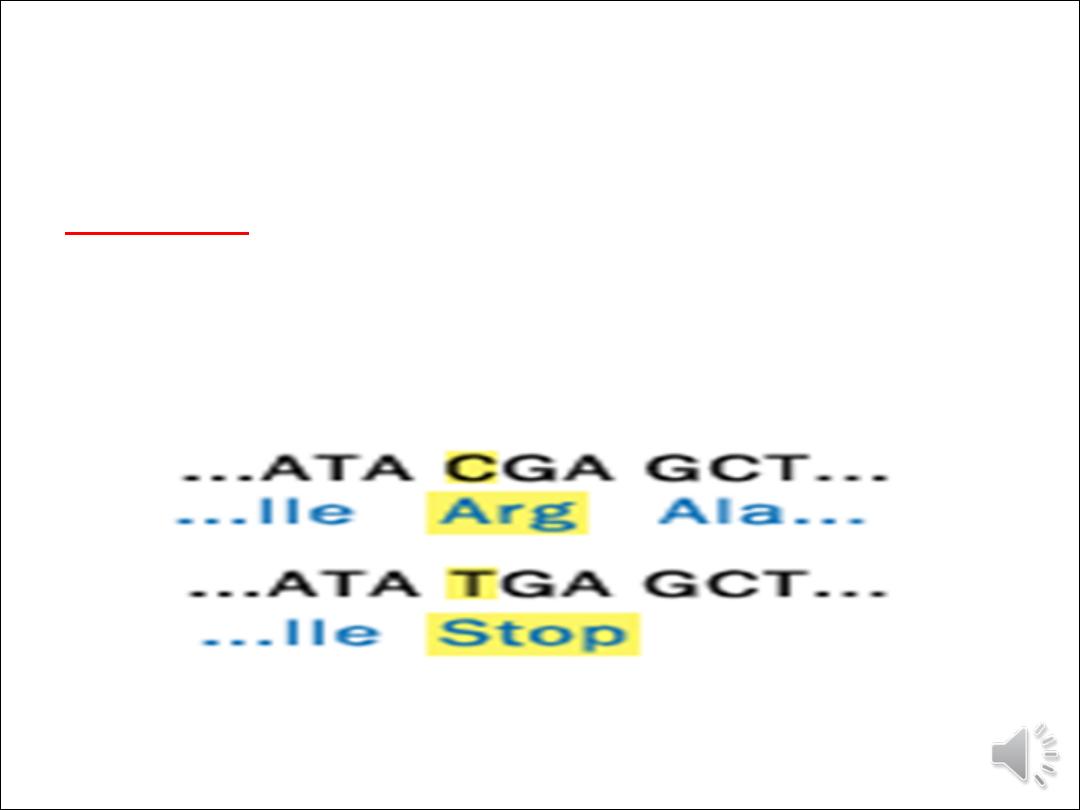
5- Nonsense
A change in the genetic code that results in the coding for a
stop codon rather than an amino acid. The shortened protein is
generally non-function or its function is impeded.
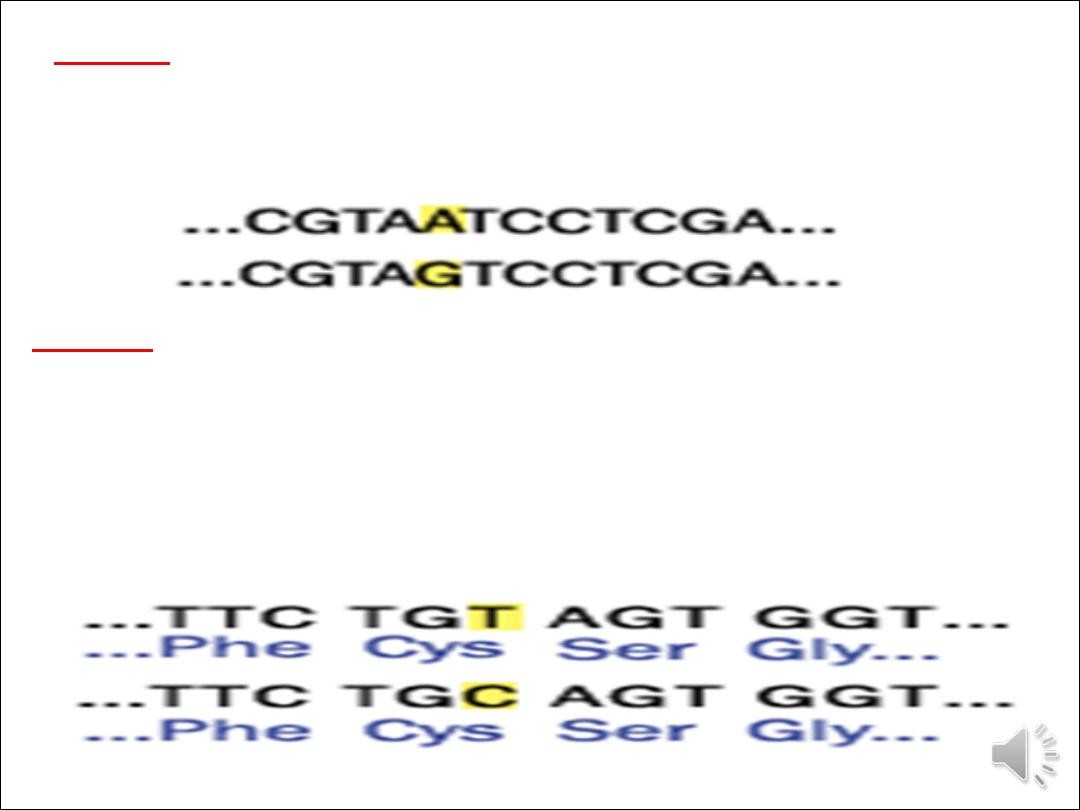
6- Point
A single base change in DNA sequence. A point mutation may
be silent, missense, or nonsense.
7- Silent
A change in the genetic sequence that does not change the
protein sequence. This can occur because of redundancy in the
genetic code where an amino acid may be encoded for by
multiple codons.
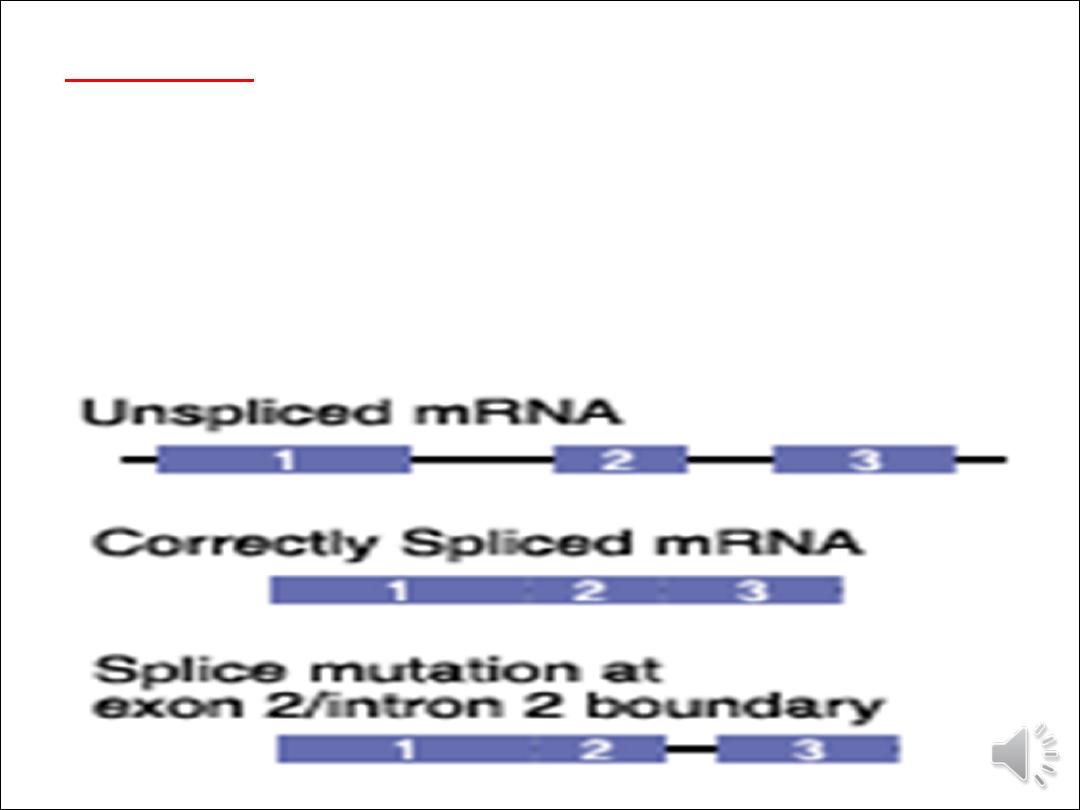
8- Splice Site
A change in the genetic sequence that occurs at the boundary
of the exons and introns. The consensus sequences at these
boundaries signal where to cut out introns and rejoin exons in
the mRNA. A change in these sequences can eliminate splicing
at that site which would change the reading frame and protein
sequence.

